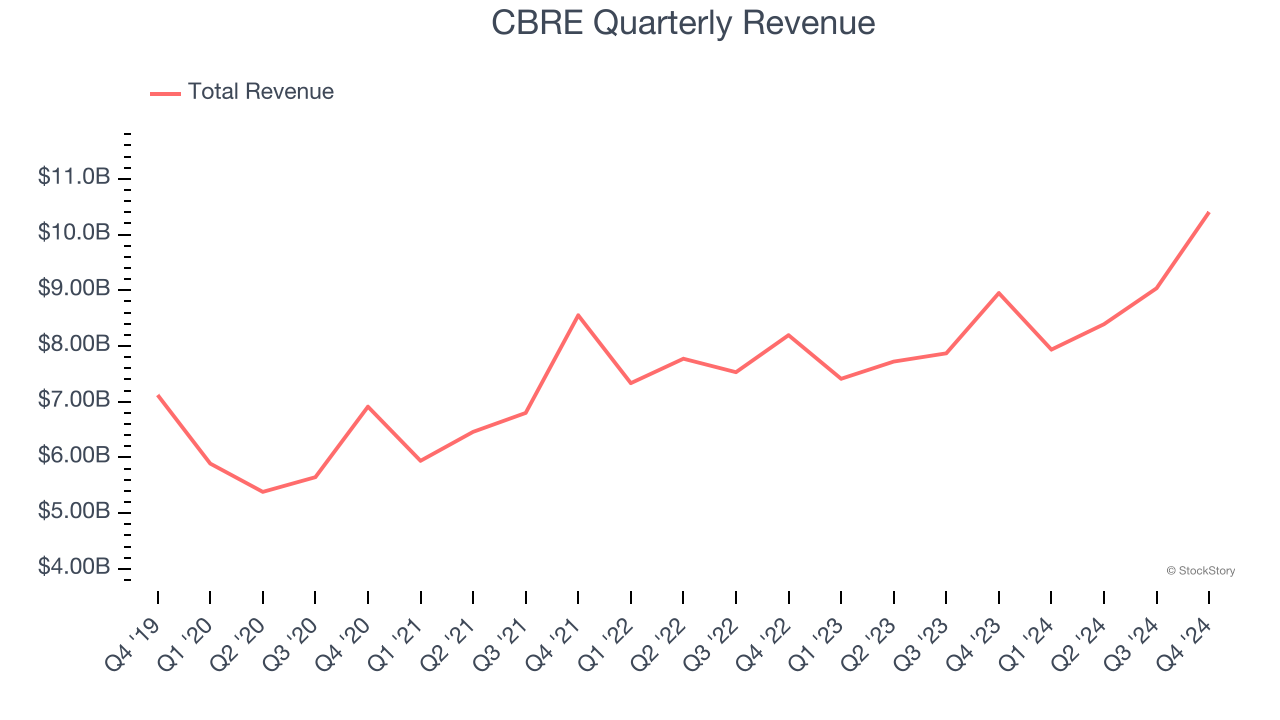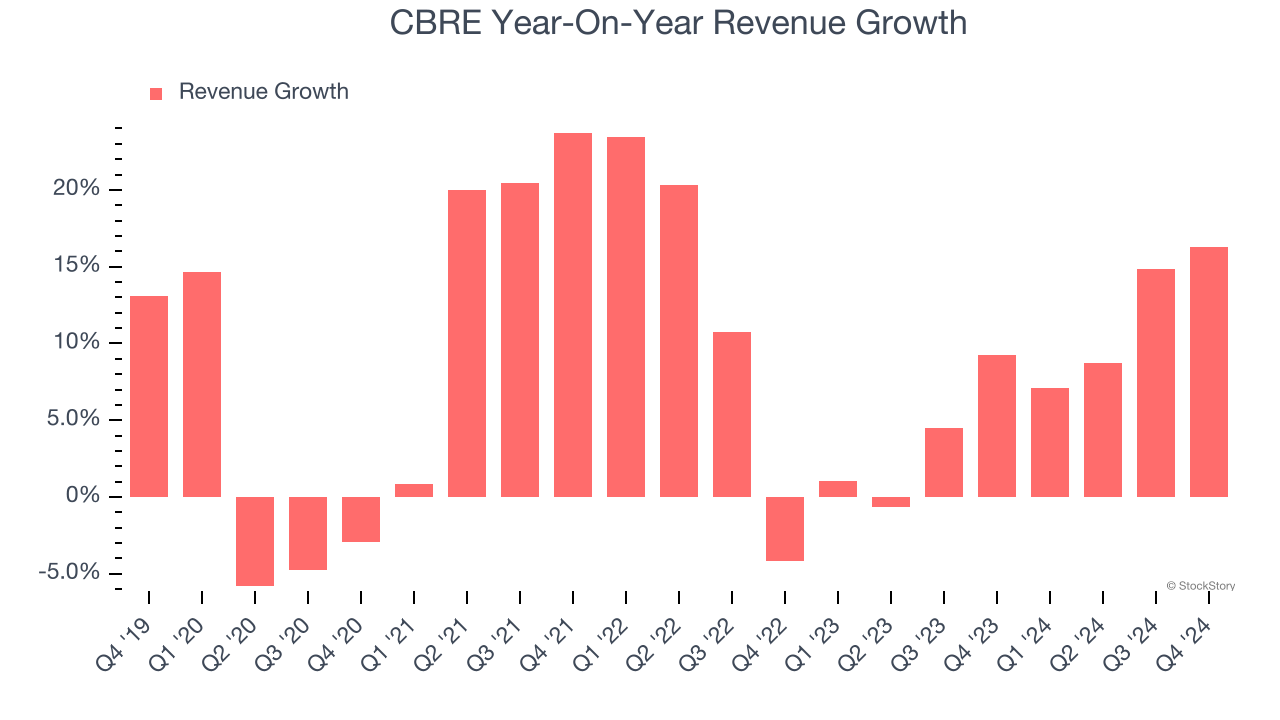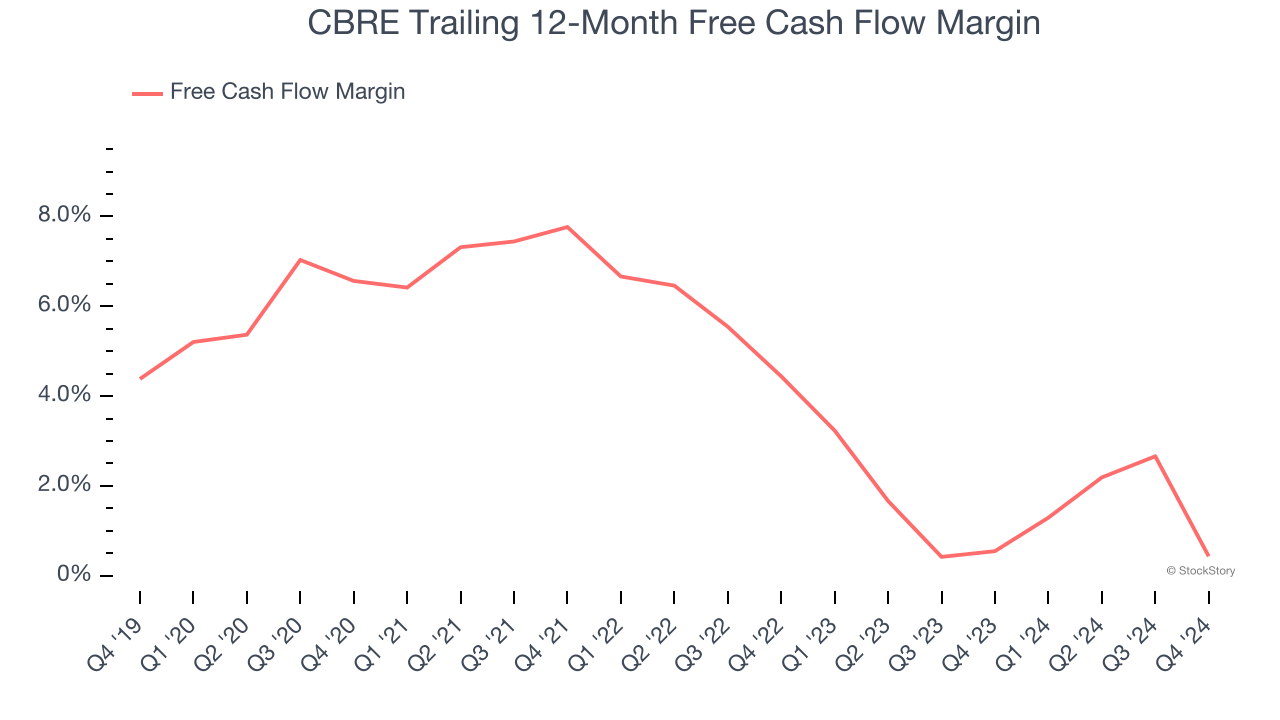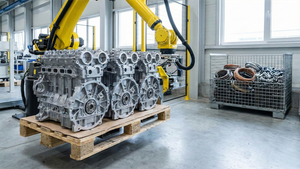
Commercial real estate firm CBRE (NYSE: CBRE) reported revenue ahead of Wall Street’s expectations in Q4 CY2024, with sales up 16.2% year on year to $10.4 billion. Its non-GAAP profit of $2.32 per share was 3.9% above analysts’ consensus estimates.
Is now the time to buy CBRE? Find out by accessing our full research report, it’s free.
CBRE (CBRE) Q4 CY2024 Highlights:
- Revenue: $10.4 billion vs analyst estimates of $10.28 billion (16.2% year-on-year growth, 1.2% beat)
- Adjusted EPS: $2.32 vs analyst estimates of $2.23 (3.9% beat)
- Adjusted EBITDA: $1.09 billion vs analyst estimates of $1.09 billion (10.4% margin, 0.6% miss)
- Adjusted EPS guidance for the upcoming financial year 2025 is $5.95 at the midpoint, missing analyst estimates by 1.1%
- Operating Margin: 5.7%, in line with the same quarter last year
- Free Cash Flow Margin: 0%, down from 8.5% in the same quarter last year
- Market Capitalization: $42.31 billion
“The fourth quarter was CBRE’s best quarter ever for core earnings and free cash flow with broad strength across our business,” said Bob Sulentic, CBRE’s chair and chief executive officer.
Company Overview
Established in 1906, CBRE (NYSE: CBRE) is one of the largest commercial real estate services firms in the world.
Real Estate Services
Technology has been a double-edged sword in real estate services. On the one hand, internet listings are effective at disseminating information far and wide, casting a wide net for buyers and sellers to increase the chances of transactions. On the other hand, digitization in the real estate market could potentially disintermediate key players like agents who use information asymmetries to their advantage.
Sales Growth
A company’s long-term sales performance signals its overall quality. Even a bad business can shine for one or two quarters, but a top-tier one grows for years. Unfortunately, CBRE’s 8.4% annualized revenue growth over the last five years was sluggish. This fell short of our benchmark for the consumer discretionary sector and is a tough starting point for our analysis.

Long-term growth is the most important, but within consumer discretionary, product cycles are short and revenue can be hit-driven due to rapidly changing trends and consumer preferences. CBRE’s annualized revenue growth of 7.7% over the last two years aligns with its five-year trend, suggesting its demand was consistently weak. 
We can dig further into the company’s revenue dynamics by analyzing its three most important segments: Advisory Services, Workplace Solutions, and Investment Management, which are 29.7%, 67.7%, and 2.6% of revenue. Over the last two years, CBRE’s Advisory Services revenue (leasing, capital markets) was flat. However, its Workplace Solutions revenue (facilities and project management) averaged year-on-year growth of 2% while its Workplace Solutions revenue (facilities and project management) averaged 2% declines.
This quarter, CBRE reported year-on-year revenue growth of 16.2%, and its $10.4 billion of revenue exceeded Wall Street’s estimates by 1.2%.
Looking ahead, sell-side analysts expect revenue to grow 11.5% over the next 12 months. Although this projection implies its newer products and services will fuel better top-line performance, it is still below the sector average.
Today’s young investors won’t have read the timeless lessons in Gorilla Game: Picking Winners In High Technology because it was written more than 20 years ago when Microsoft and Apple were first establishing their supremacy. But if we apply the same principles, then enterprise software stocks leveraging their own generative AI capabilities may well be the Gorillas of the future. So, in that spirit, we are excited to present our Special Free Report on a profitable, fast-growing enterprise software stock that is already riding the automation wave and looking to catch the generative AI next.
Cash Is King
Although earnings are undoubtedly valuable for assessing company performance, we believe cash is king because you can’t use accounting profits to pay the bills.
CBRE broke even from a free cash flow perspective over the last two years, giving the company limited opportunities to return capital to shareholders.

CBRE broke even from a free cash flow perspective in Q4. The company’s cash profitability regressed as it was 8.5 percentage points lower than in the same quarter last year, prompting us to pay closer attention. Short-term fluctuations typically aren’t a big deal because investment needs can be seasonal, but we’ll be watching to see if the trend extrapolates into future quarters.
Key Takeaways from CBRE’s Q4 Results
It was good to see CBRE narrowly top analysts’ revenue expectations this quarter. We were also happy its EPS outperformed Wall Street’s estimates. On the other hand, its full-year EPS guidance slightly missed. Zooming out, we think this was a good quarter with a mediocre outlook. The stock remained flat at $141.80 immediately after reporting.
Should you buy the stock or not? What happened in the latest quarter matters, but not as much as longer-term business quality and valuation, when deciding whether to invest in this stock. We cover that in our actionable full research report which you can read here, it’s free.





